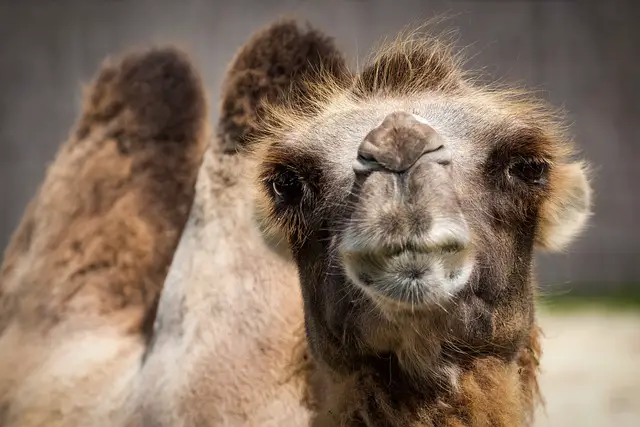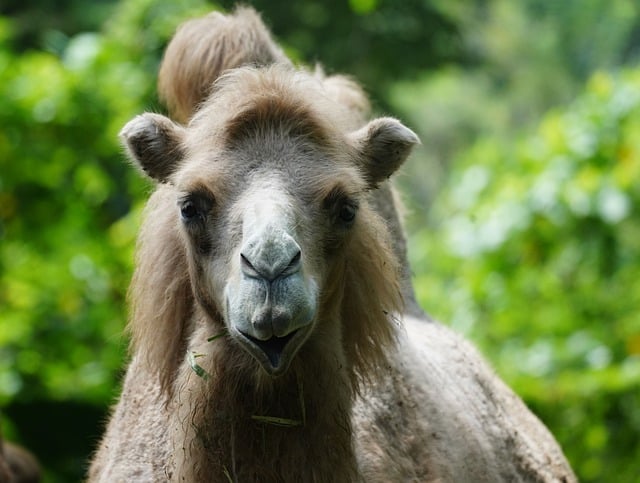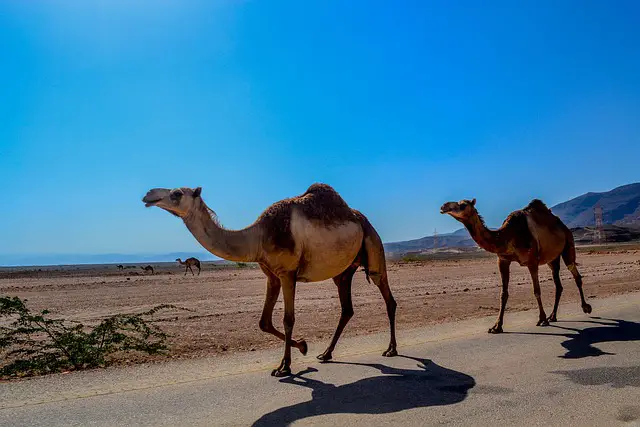Many animal lovers dream of owning an exotic animal, but how much does a camel cost? But before taking the plunge, it’s important to understand how much the total care will be for camel ownership. Camel prices to purchase vary greatly based on age, health, training, breed, and source. Annual care and maintenance costs should also factor into your budget.
Let’s take an in-depth look at upfront costs, recurring expenses, total cost of ownership, and how to manage expenses to find affordable options for bringing home your own camel companion.

How Much Does a Camel Cost + Care Guide
A camel’s purchase price depends on:
Breed – The two most common camel breeds are Dromedary (one hump) and Bactrian (two humps). Bactrians tend to cost more as they are rarer.
Age – Baby camels (calves) range from $5,000-$30,000. Adults average $7,000-$20,000 but can run $30,000+ for trained, breeding-quality adults.
Training Level – Untrained calves and camels cost less. Trained riding, packing, breeding, or milking camels sell for higher prices.
Source – Buying directly from breeders tends to be cheaper than through third party dealers or auction sites. Imported camels are pricier.
Health – Have a vet examine teeth, joints, hooves, and do a full physical before purchase. Medical issues lower price.
Pedigree – Show quality purebred pedigreed camels from champion bloodlines fetch higher prices.
On average, plan on a $10,000-$15,000 outlay for a healthy young untrained camel, while purpose-trained adults average $15,000-$25,000.

Factoring in Recurring Costs
Camels require specialized care. Here are estimates for average annual expenses:
Food – $1000-$3000. Good quality grass hay should make up majority of diet. Supplement with camel-specific feeds.
Housing – $1000+ for shelters and fenced enclosures. Outdoor access with shelter is required.
Vet Care – $300-$500 annually. Larger for castration, medical issues. Need vaccines, deworming.
Hoof Care – $100-$300 for proper trimming every 6-10 weeks. Handler costs additional.
Equipment – $500-$1000+ for halters, leads, saddles, brushes, transportation trailer.
Miscellaneous – $500. Enrichment items, medications, training aids, supplies.
Total average annual costs tend to range $3500-$7500+ depending on your area and camel’s needs. Exotic veterinary care, supplements, reproduction costs, and medical issues can drive expenses higher.
What is the cheapest camel to buy?
- Untrained calves – Baby camels that are just a few months old and have not been trained or handled extensively will be the lowest priced options. Expect to pay $5,000 – $10,000.
- Older females – Female camels that are past prime breeding age, around 15-20 years old, often sell for less than high-value younger females. Prices may range from $7,000-$12,000.
- Males – Intact male camels are generally less expensive than females, as they cannot produce calves. Gelded males that cannot breed at all are usually the lowest priced. May cost $8,000-$15,000.
- Rescues – Adopting an untrained camel from a rescue sanctuary sometimes offers lower prices, around $3,000-$8,000. Health and training challenges may exist.
- Auctions/Estate Sales – Buying camels being liquidated from zoos, farms, or estates are inconsistent but can produce bargain finds under $10,000.
The least expensive camels require the most hands-on training and care. But significant cost savings are possible when purchasing if you opt for budget-friendly demographics. Just ensure you can properly care for your new camel’s needs.

Total Camel Worth Breakdown
Factoring both purchase and care, here are total cost estimates:
Baby Calf – $15,000-$40,000 purchase. $3500+ annual care.
Adult Untrained – $10,000-$20,000 purchase. $5000+ annual care.
Trained Adult – $20,000-$40,000 purchase. $5000+ annual care.
Breeding Pair – $30,000+ purchase. $7000+ annual care.
Over a 10-15 year lifespan, total ownership costs for a camel range $50,000-$150,000. Costs on the lower end are possible with preventative care, minimal supplements and equipment, and buying at a savings from private owners.
Purchasing Your Own Camel in the United States – Finding Reputable Breeders
For those seeking to purchase and own a domesticated camel in the United States, connecting with knowledgeable and ethical camel breeders is key. The market has expanded greatly beyond just zoos and exhibitors to include more pet and livestock owners. This growing demand means sourcing quality animals requires diligence.
Let’s explore the unique considerations when seeking camel breeders in the US and how to locate the best fit camel for your plans and experience level.
Ownership Considerations in the US
Owning camels in the US involves:
- Exotic animal permitting – Most states require permits to house exotic camelids. Some prohibitions exist. Check regulations.
- Specialized care – American veterinarians sometimes have limited camel health expertise. Camel husbandry differs significantly from other livestock.
- Handling challenges – Camels often require sedation for transport and routine vet care. Their size and stubborn nature complicate procedures.
- Diet considerations – Providing proper nutrition means sourcing specific camel feeds and supplements not typically stocked locally. Hay must be extra fine and seed-free.
- Cost commitments – Significant upfront investment and thousands in annual care costs are the reality. Expenses add up quickly.
- Facilities needs – Camels require sturdy specialized housing, shelters, and fencing that contain their strength and climbing abilities.
Doing thorough research allows setting realistic expectations around camel ownership. But the challenges are manageable with dedication. Next, let’s look at where to locate reputable camel breeders.
Finding Breeders and Sellers in the US
Good resources for finding US-based camel sellers include:
- Livestock and Exotic Animal Auctions – Events like the Yoder Auction in Ohio frequently have camel listings.
- Exotic Animal Dealers – Brokers like Texas Camelids specialize in camel sales and ship nationwide. Use caution buying sight-unseen.
- Private Breeder Websites – Top Google results for “camel breeders” showcase directory-style sites listing camel farms across the US.
- Exotic Animal Owner Groups – Connecting with owners through regional groups and associations may produce leads.
- Veterinary Networks – Specialist vets sometimes know clients looking to rehome camels. But use discretion sharing contact info.
- Exotic Animal Expos – Attending events like the Southwest Camelid Expo allows meeting sellers and camel owners firsthand.
- Classified Listing Sites – Niche sites like Exotic Animals for Sale occasionally feature camel availability.
Casting a wide initial net helps identify potential sources for further vetting. Local options are ideal, but transportation can expand the geography.
Evaluating and Visiting Prospective Camel Breeders
Once leads surface, proper vetting steps include:
- Researching the seller/farm background – Look for longevity, mission, values, practices, reviews. Seek established experts dedicated to camelid wellbeing.
- Requesting health records – Reputable sources test and document health status, veterinary care, and genetics history.
- Arranging pre-purchase veterinary exams – Off-site or on-farm exams by camel specialist vets provide objective assessment before purchase agreements.
- Visiting in-person when possible – Observe facilities and herd health firsthand. Get a feel for the seller’s practices and ethics.
- Asking many questions – A good breeder will openly share details on husbandry, nutrition, vet protocols, herd dynamics, and the individual camel’s history and personality.
- Avoiding unregistered roadside attractions – Some pop-up exhibitors breed and sell camels purely for income with inadequate standards.
Taking time to thoroughly vet sellers safeguards your investment and the camel’s welfare. Patience pays off in identifying an ideal addition.
Homestead Animal
Camels offer many benefits when incorporated into a homestead or small farm setting beyond just being an exotic pet. With proper training, these highly intelligent animals can be worked much like horses or oxen to provide assistance with all kinds of farm tasks.
On a homestead, camels can be used for riding, packing heavy materials, pulling carts or wagons, and providing transportation like a horse. Their strength and stamina allow camels to haul loads weighing several hundred pounds over long distances, bringing supplies or produce to and from the homestead. Camels can pull farming implements like plows or harrows as well.
Around the homestead itself, trained camels respond well to precise direction and repetition once bonded with a handler. They can be guided to transport firewood, grains, manure, fencing supplies or whatever else needs moving from point A to B. Camels can also be taught to carry riders on patrols around the property when checking livestock or fences.
For homesteads in more remote, arid regions, using camels can significantly reduce labor thanks to their versatility. Plus camels naturally thrive in hot, dry climates. With time and training, a camel becomes a loyal helper that eases workloads and provides companionship. Their many skills lend well to homestead utility.
Choosing the Right Camel for Your Plans
With an abundance of camel breeders across the US, take time to define your goals and experience level. Those new to camels may want to start with an untrained calf or juvenile to undertake training themselves with professional guidance.
If seeking a riding, packing, or breeding camel, buying trained adults from breeders invested in these skills makes sense. And remember temperament and personality are just as key as capabilities.
Doing diligent research allows finding healthy, ethical camels that suit your needs while supporting conscientious US-based breeders specializing in these amazing animals. Reach out if you need any camel buying guidance!
Ways to Reduce Camel Ownership Costs
Here are some tips to lower overall camel expenditures:
- Buy locally from private owners to save on transport costs.
- Look for young untrained calves which have lower upfront costs. Invest in professional training over time.
- Have your own hay source or buy hay in bulk direct from producers.
- Provide basic but sturdy shelter options like converted sheds rather than elaborate stables.
- Do preventative care like vaccines and dental work yourself under a vet’s guidance if experienced.
- Form connections with other camel owners to split costs like shared transportation and bulk feed orders.
- Insure camels in case of serious injury or illness requiring expensive treatment.
- Start with one camel rather than a pair to halve upkeep costs. Camels can bond closely with owners.
Questions
- How much does it cost to buy a camel?
The purchase price for a camel can range from $5,000 for an untrained baby calf up to $30,000 for a mature, professionally trained adult. Average costs are $10,000-$20,000.
- What are the annual costs for caring for a camel?
Expect to budget $3,500-$7,500 per year for food, housing, veterinary care, hoof trims, equipment, and other recurring costs. Actual expenses vary based on your region.
- How long do camels live?
Camels often live 40-50 years. When estimating total lifetime costs, plan for caring for your camel for potentially 15-20 years or longer after your initial purchase.
- What are some tips for making camel ownership more affordable?
Buying directly from private breeders rather than dealers saves money. Looking for young untrained camels costs less upfront. Buying in bulk and splitting costs with other owners reduces some expenses.
- Should I budget more for a Dromedary or Bactrian camel?
Bactrian camels with two humps tend to have higher purchase costs and more intensive nutritional needs. However, care costs can widely vary between individuals of either breed based on age, training, and health.
How Do Camel Ownership Costs Compare to Other Large Livestock?
When considering adding a unique animal like a camel to your farm or homestead, it’s useful to understand how the expenses compare to more traditional domesticated species. Let’s analyze the costs of camels in relation to other major livestock animals like horses, cows, and llamas.
Key factors impacting ownership costs of large animals include:
- Purchase price – The initial buying investment based on age, breed, training, etc.
- Care and feed – Expenses for housing, fencing, bedding, hay/grain, routine care
- Health maintenance – Preventative and medical treatment costs
- Facilities – barn, shelter, pasture requirements
- Handling needs – Specialized equipment, transportation, labor
- Training – Whether professional training services are recommended
When each element is weighed, how do camels compare?
Camel Purchase Costs
- Untrained Calf: $5,000 – $15,000
- Untrained Adult: $7,000 – $20,000
- Trained Adult: $15,000 – $30,000+
Horse Purchase Costs
- Untrained Foal: $500 – $5,000
- Untrained Adult: $1,000 – $10,000
- Trained Adult: $5,000 – $100,000+
Cow Purchase Costs
- Calf: $300 – $1,000
- Heifer: $800 – $2,000
- Mature Cow: $1,000 – $1,800
Llama/Alpaca Purchase Cost
- Cria: $500 – $5,000
- Untrained Adult: $800 – $2,000
- Trained Adult: $2,000 – $7,500
Camel and horse trained adult prices top the scale, while cattle represent the lowest upfront purchase investment of the major species. Llama and untrained camels fall mid-range.
Comparison of Annual Care Costs
Camel: $3,500 – $7,500
Horse: $3,000 – $5,000
Cow: $500 – $2,000
Llama/Alpaca: $800 – $2,000
Here camels and horses again align closely in yearly care costs, with cattle coming in lowest thanks to lower feed requirements and facility needs. Llamas land in the middle because of lower feed amounts than camels and horses.
Facilities Cost Comparison
For housing barns, fencing, shelters and handling equipment:
Camel: $8,000+
Horse: $5,000 – $20,000+
Cow: $2,000 – $10,000
Llama: $2,000 – $5,000
Camels need extremely sturdy facilities that account for their size, strength, and climbing abilities. Horse facilities rival camels on the high end. Cattle and llamas have lower barn and fencing needs.
Average Total Ten Year Ownership Cost
Camel: $80,000 – $150,000
Horse: $50,000 – $200,000
Cow: $15,000 – $40,000
Llama: $25,000 – $50,000
Factoring purchase price plus a decade of care, horses and camels again emerge as the most expensive, long-term livestock investments. Cattle provide the most affordable large animal ownership overall thanks to lower costs across the board.
Key Takeaways on Camel Ownership Costs
While camel purchase prices are on par with horses, their specialized housing and handling needs mean lifetime costs tend to run higher overall than keeping horses or other livestock. Upfront and recurring expenses are significant.
However, devoted camel owners find the companionship and uniqueness of sharing life with these animals makes the commitment worthwhile. For those willing to invest the proper time, funds, and education into their specialized care, camels can be an incredibly rewarding addition.
Farm Use
Utilizing Camels for Farm Work and Production
While camels are often thought of as exotic pets or zoo creatures in Western societies, in many parts of the world camels play a regular role as livestock helpers on farms. Camels actually have many attributes that make them incredibly useful animals on agricultural operations.
With proper training, handling, and integration, raising camels can benefit farms seeking hardy, versatile assistance. Here are some of the ways camels can be utilized for production and work around the farm:
Transportation and Hauling
Camels have tremendous strength and stamina, enabling them to carry heavy loads over long distances. Their padded feet also tread lightly making them useful for transporting goods across fragile croplands. Farmers can have camels:
- Pack gear, crops, firewood, feed, water, supplies, etc. Camels can carry 200-400 lbs routinely.
- Pull carts, wagons, buggies or plows loaded with agricultural cargo
- Ride them as working steeds around the property
- Carry riders who are herding or managing other livestock species
This “beast of burden” role allows camels to significantly reduce hauling and transportation labor on farms.
Weed and Brush Control
Camels can help remove invasive weeds and woody brush from fields or grazing areas. A camel’s wide, padded mouth enables them to grab and rip out sturdy roots and stems other livestock ignore.
They will browse on thorny plants and woody shrubs like mesquite, juniper, and thistle that cattle and goats avoid. Just take care they don’t also destroy desired crops!
Hardy Livestock for Marginal Land
Camels thrive in hot, dry conditions with sparse vegetation that would cause other grazing animals to founder. They extract moisture efficiently from desert plants.
Deploying camels allows economically utilizing acreage with poor soil, limited water, or scrubby forage. Their grazing habits complement rather than compete with cattle or small ruminants on shared pasture.
Milk Production
Camel milk provides a rich source of nutrients. Camels produce milk averaging 2-3 gallons daily that can be processed into cheese, yogurt, or other dairy goods. Camel calves must not be weaned for milking.
As a bonus, camels rarely kick or get upset during milking like other dairy animals. Their agreeable nature makes them productive dairy helpers.
Security and Herd Guarding
Some farmers employ bonded gelding camels as protection for other livestock. Camels aggressively use posturing, stomping, and hard blows from their powerful chests to ward off coyotes, dogs, foxes, and other threats.
The mere presence of a large camel guardian watching over a herd helps deter predators from approaching young lambs, kid goats, or calves.
With proper oversight, integration, and training, raised from calfhood, camels become loyal farm contributors. Their unique abilities lend well to agricultural operations seeking to diversify livestock and improve utilization of the land. Camels work hard when given the opportunity!
Final Thoughts
With smart planning and sourcing, camel ownership can be a somewhat more affordable exotic animal investment. Ensure you have a proper budget to provide good nutrition, housing, veterinary care, and handling. The enjoyment of owning this unique animal makes the costs worthwhile!

